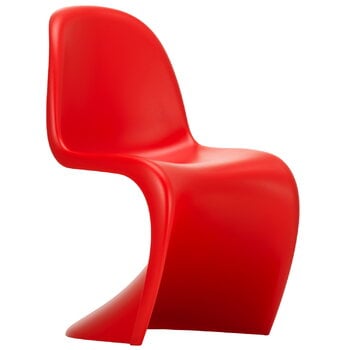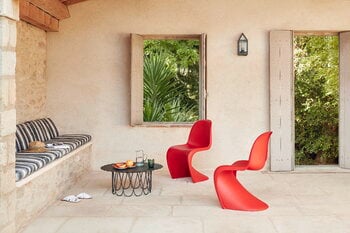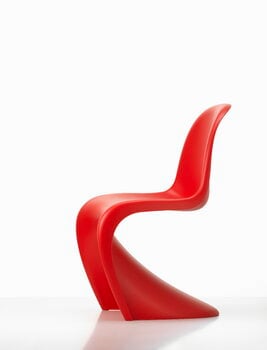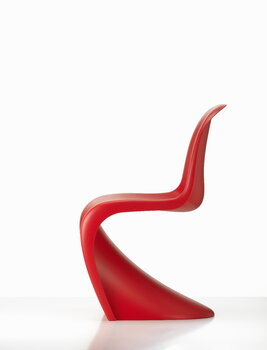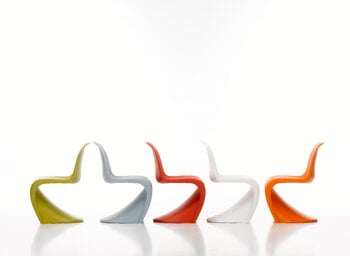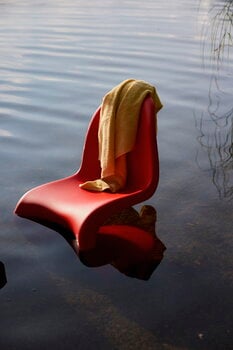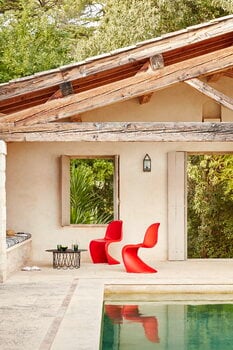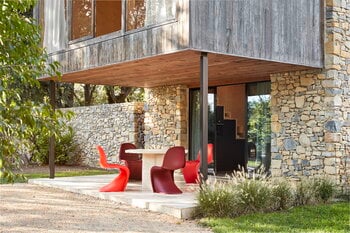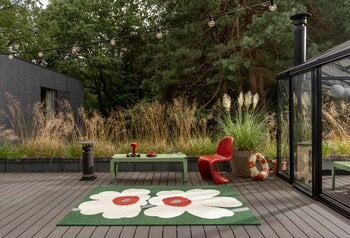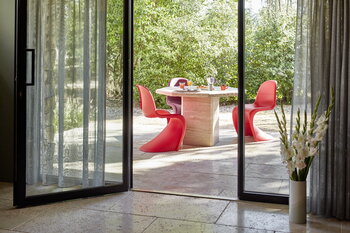Vitra's Panton chair is one of the best-known classics of modern furniture design. Designed by Verner Panton in 1960, the Panton chair reflects perfectly the experimental design mentality of the 1960s – back then, it was the first chair made of a single piece of plastic.
A great number of different versions of the Panton chair have been launched during the years, but it wasn’t until 1999 that Vitra began manufacturing the Panton chair with its original design. Made of durable, coloured polypropylene with a matte finish, the ergonomically shaped seat and slightly flexible material make the Panton chair pleasant to sit on. The material also allows the eye-catching Panton chair to be used outdoors on the balcony, patio or in the garden. In 2021, the chair's proportions were updated to better meet the needs of modern-day life.
